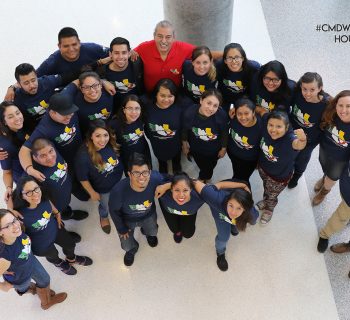Opinion by Nolan Rappaport | The Hill | MAR. 19, 2023 | Photo by Christian Chavez for AP
In a recent New York Times opinion article, Dara Lind of the American Immigration Council asks: “How did President Biden go from denouncing the immigration policies of his predecessor to following in his footsteps by proposing a regulation that would make the vast majority of current asylum-seekers ineligible?”
She acknowledges, however, that if the exceptions in the regulation are real, large numbers of people will remain here to pursue their cases.
According to Lind, the answer is that the number of border apprehensions went up, which historically has been viewed as a crisis.
The increase in apprehensions was only part of it. Biden also has been under pressure from challenges to his border policies in court. For instance, in Florida vs. USA, U.S. District Court Judge T. Kent Wetherell, II, concluded that Biden’s parole + ATD (Alternatives to Detention) practice is unlawful, and vacated it.
Wetherell found that Biden “has turned the Southwest Border into a meaningless line in the sand and little more than a speedbump for aliens flooding into the country by prioritizing ‘alternatives to detention’ over actual detention and by releasing more than a million aliens into the country — on ‘parole’ or pursuant to the exercise of ‘prosecutorial discretion’ under a wholly inapplicable statute.”
Moreover, I don’t think Biden has changed course. He seems to still be trying to keep his campaign promise to secure our country’s values as a nation of immigrants, the two main ones being to welcome asylum seekers and find alternatives to detention. Wetherell’s decision shows how far Biden has gone to keep that promise.
The regulation Lind complains about is not inconsistent with that objective. It is just supposed to reduce illegal crossings by encouraging migrants to use lawful pathways into the United States — or to apply for asylum in one of the countries they pass through on the way to the United States. It does this by establishing a rebuttable presumption of asylum ineligibility for migrants who don’t apply for asylum in any of the countries they travel through and seek instead to enter the United States unlawfully.
Furthermore, he is creating new ways for them to come here lawfully, such as his humanitarian parole program for migrants from Cuba, Haiti, Nicaragua, and Venezuela who do not have entry documents. They are granted parole status before they reach the border instead of after they have made an illegal crossing.
Highlights from Florida vs. USA
Section 1225(b) of the Immigration and Nationality Act (INA) mandates the detention of arriving migrants who do not have proper entry documents, with a narrow exception for parole. And these migrants are subject to expedited removal unless they establish a credible fear of persecution or torture. If they establish a credible fear, they are entitled to a hearing before an immigration judge, but the Supreme Court held in Jennings vs. Rodriguez that their detention must continue until an immigration judge grants them some form of relief or they are removed from the United States.
According to the judge’s ruling, between March 2021 and November 2022 the administration released more than 1.16 million arriving migrants into the U.S. on parole or simply as a matter of discretion.
The administration claims that it doesn’t have sufficient detention capacity to detain the migrants. But this is analogous to the parable of the child who kills his parents and then seeks pity because he is an orphan. The surge in illegal crossings during Biden’s presidency was a predictable consequence of terminating the previous administration’s border security measures, reducing the availability of detention facilities, and releasing undocumented migrants into the country.
Biden’s administration requested a reduction in funding for detention space for fiscal 2022, to accommodate only 32,500 migrants, and a further reduction to 25,000 migrants for fiscal 2023. Collectively, this had the effect of erecting a big “Come In, We’re Open” sign on the southern border.
The administration claims that it has the option of using section 1225(b) to detain arriving migrants, or section 1226(a) to release them. Section 1226(a) does permit the discretionary release of undocumented migrants: It provides that on a warrant issued by the Attorney General, a migrant may be arrested and detained pending a decision on whether he is to be removed, or released on bond or parole.
But sections 1226(a) and 1225(b) apply to migrants in different situations. The Supreme Court held in Jennings vs. Rodriguez that section 1226(a) applies to “aliens already in the country,” and section 1225 applies to migrants who are seeking admission to the country.
Section 1182(d)(5) of the INA authorizes the release of arriving migrants on a case-by-case basis for urgent humanitarian reasons or significant public benefit.
Any case-by-case considerations of the migrants the administration has released have focused on whether they were a public safety risk or a flight risk, not on whether they met the parole requirements.
The administration has claimed a public benefit from granting parole instead of complying with the more time-consuming process mandated by section 1225. It speeds up the inspection process, which decompresses overcrowded CBP facilities.
Even if parole could properly be granted on this basis, it wouldn’t authorize the administration to create an entirely new processing pathway to avoid a more time consuming one, which is what it is doing.
Complying with the law
The administration’s reductions in detention space have made it impossible to detain the tsunami of migrants arriving at our border without proper entry documents, and 9,000 to 14,000 illegal crossings a day are expected when Title 42 is terminated.
Biden can increase detention capacity and suspend the admission of migrants without entry documents who cannot be detained. The Supreme Court has held that section 1182(f) of the INA gives the president the power to suspend the entry of any alien. The president just has to find that the entry of covered aliens “would be detrimental to the interests of the United States.”
This wouldn’t have to deprive the asylum seekers of an opportunity to present their persecution claims. Biden could refer them to an expanded Central American Minors Refugee and Parole Program (CAM) outside of the United States that includes adults.
Biden created the border crisis, and he can end it.







